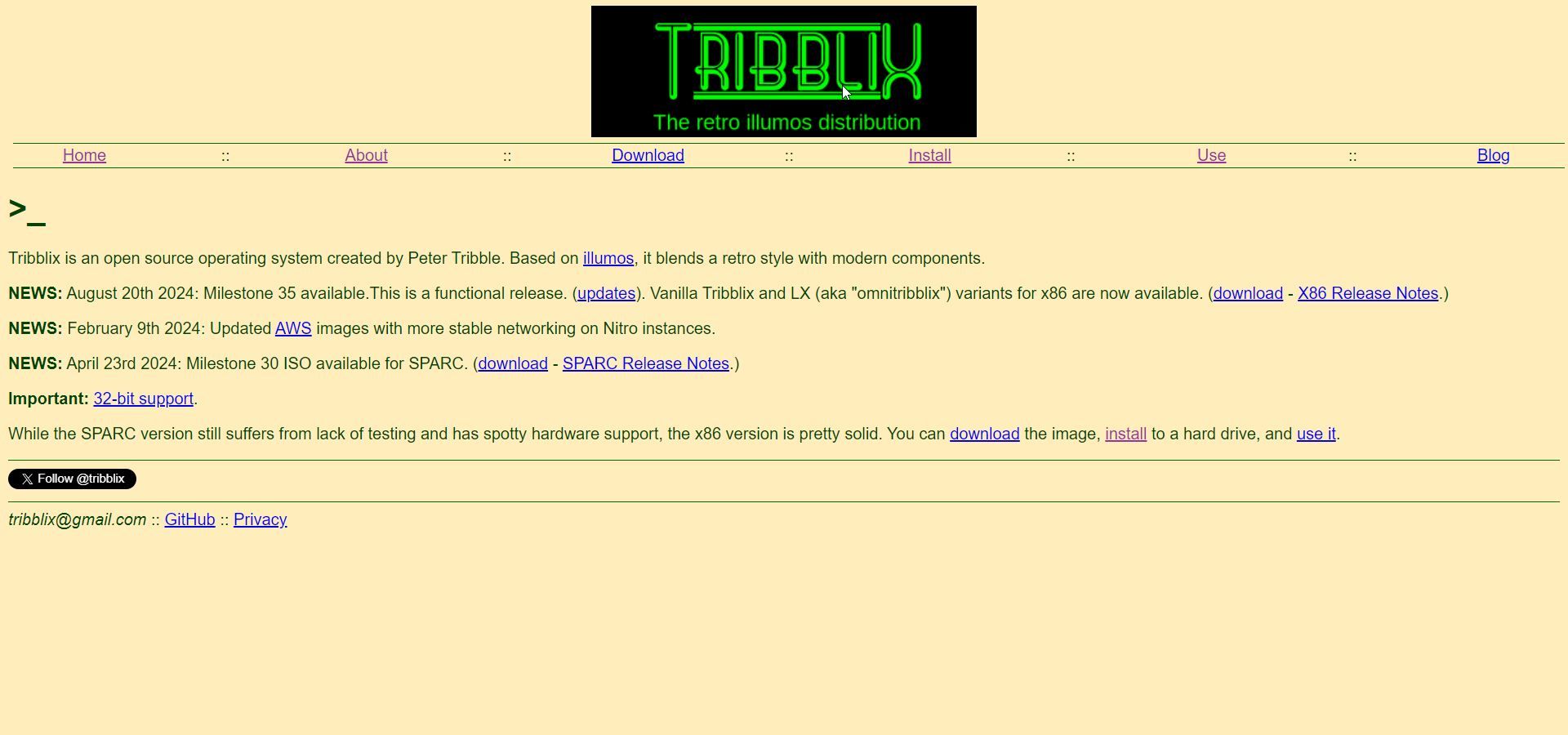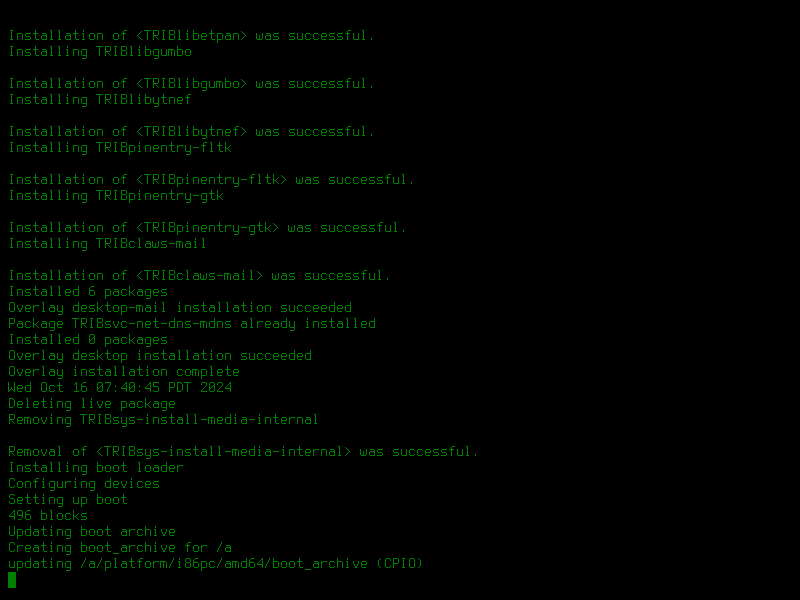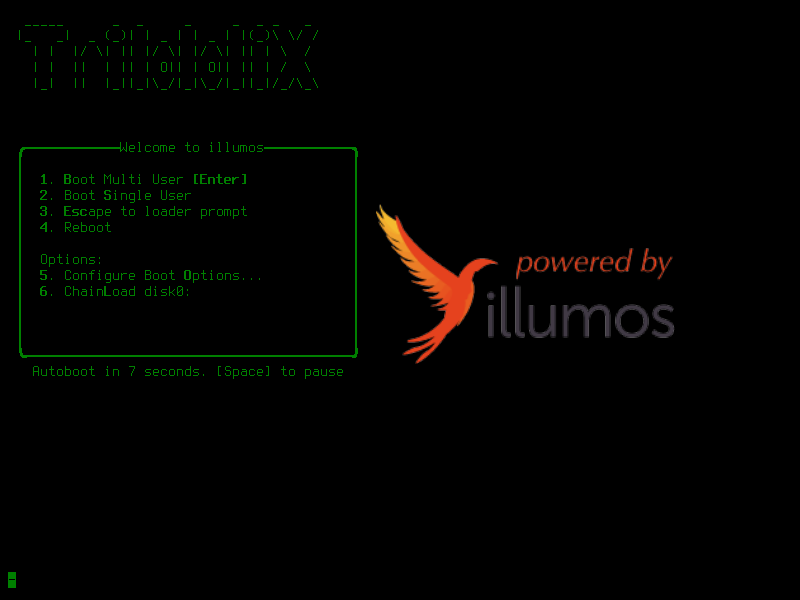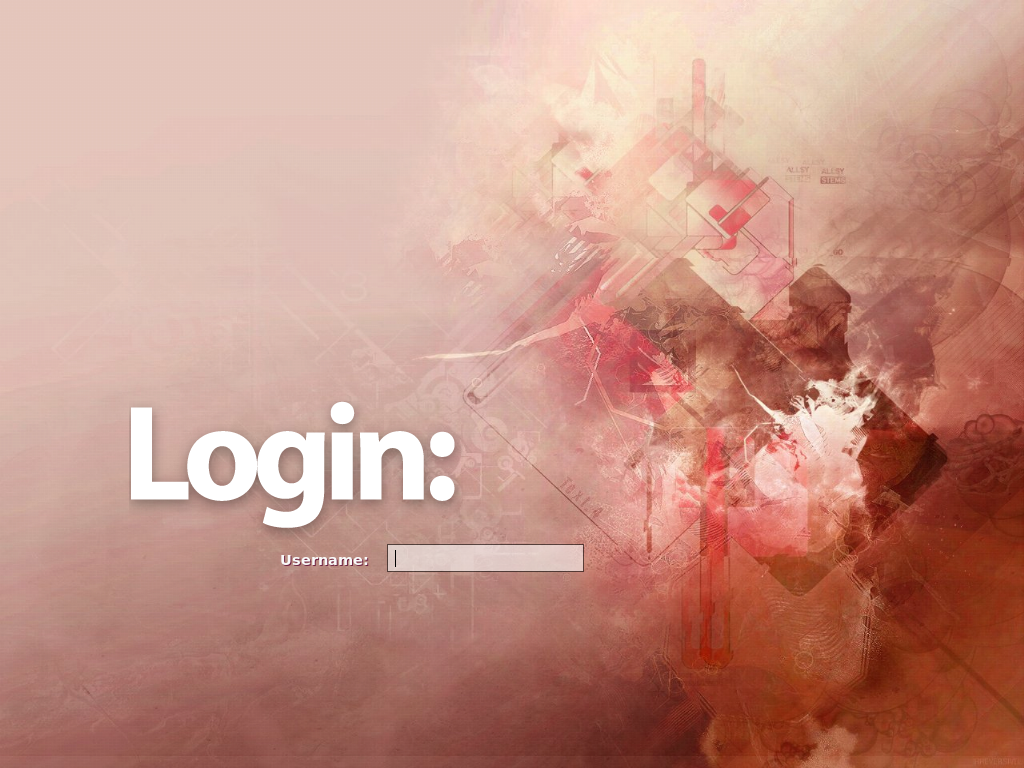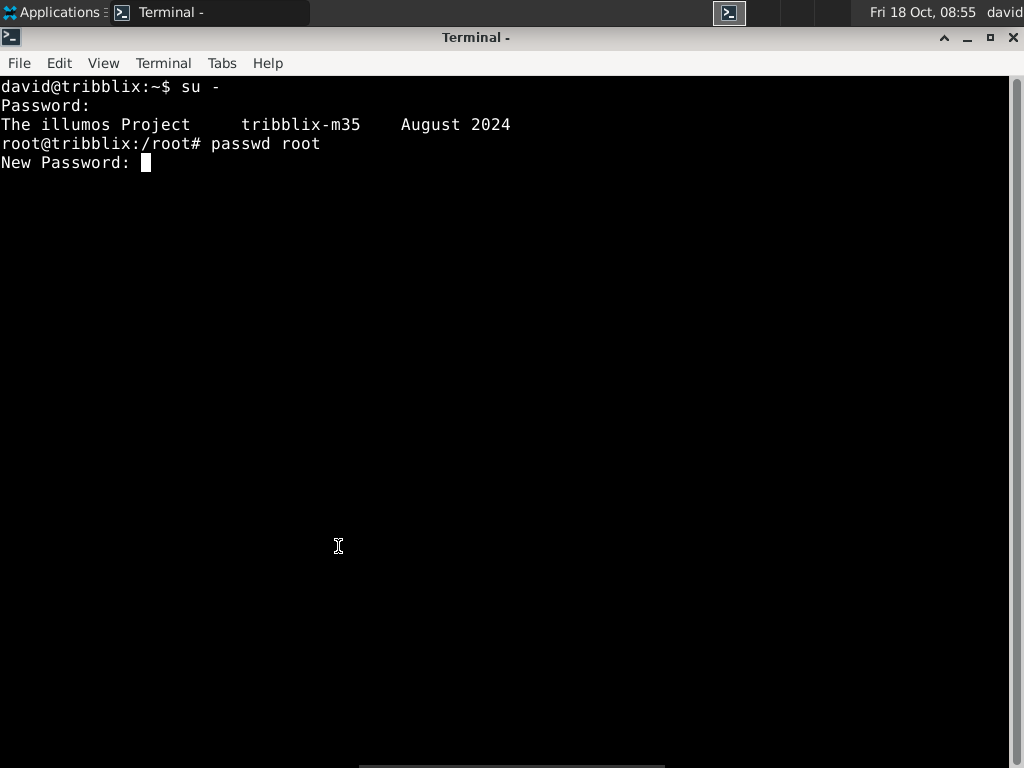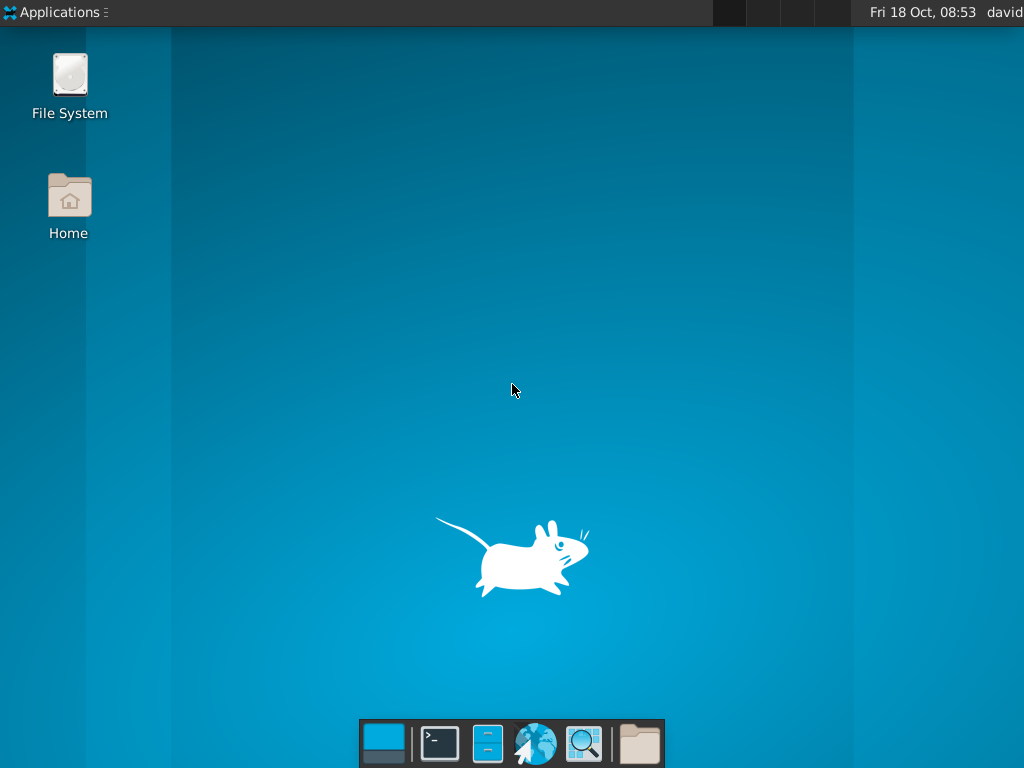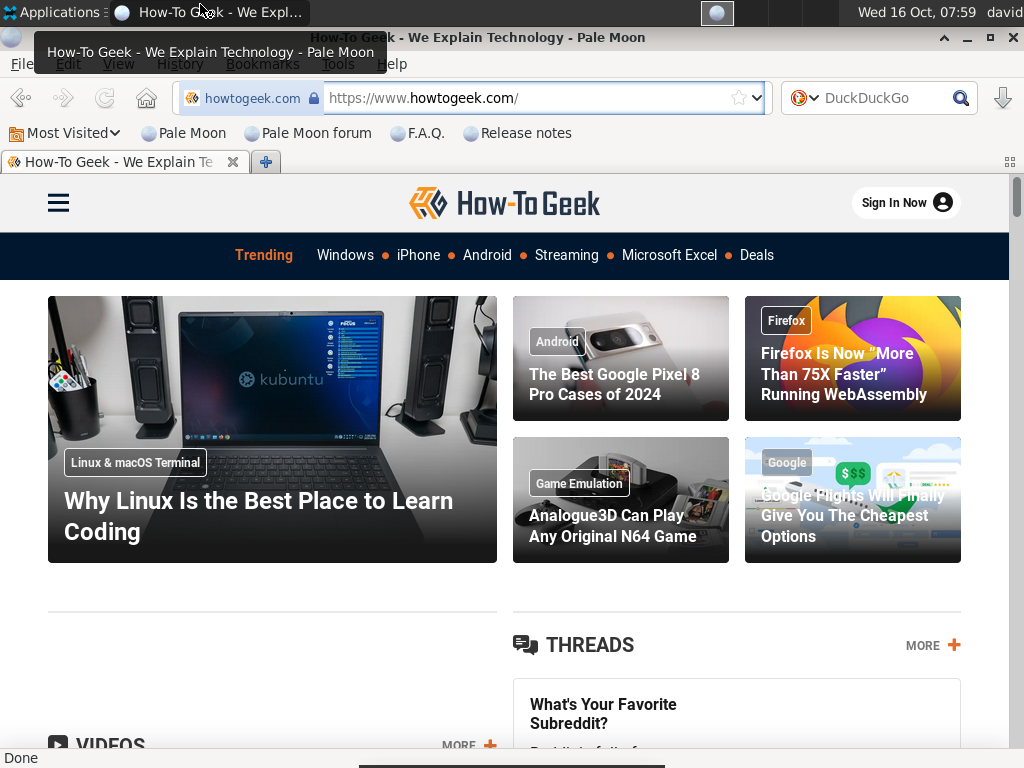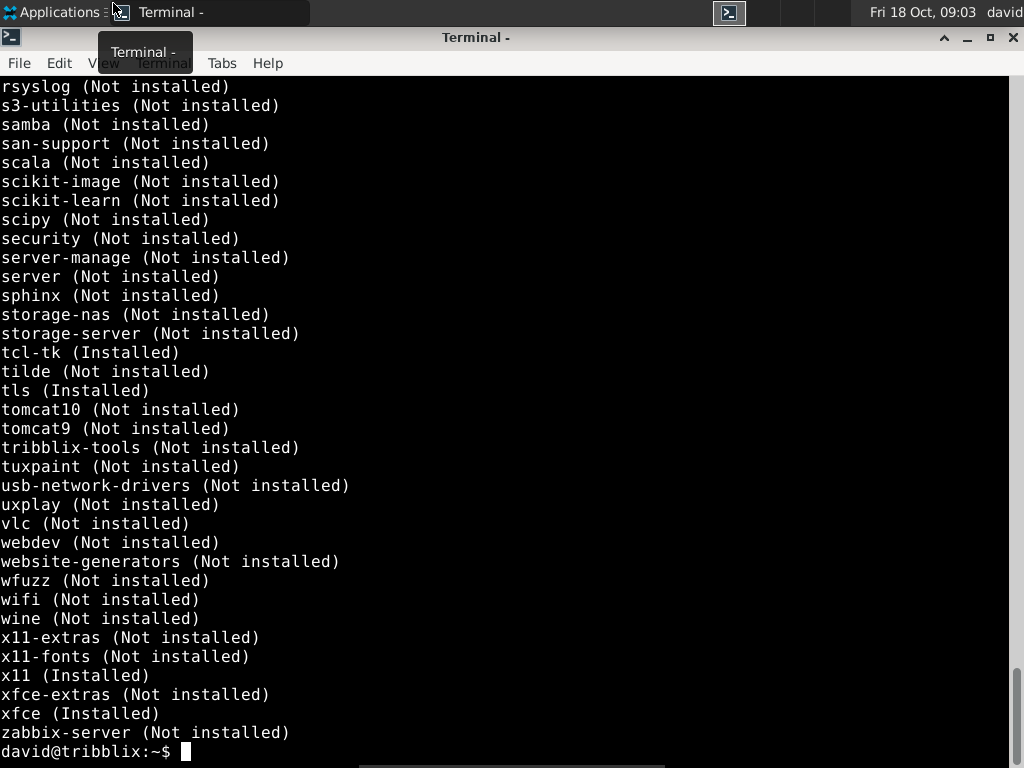Key Takeaways
- Tribblix is a Unix-like system based on Solaris and illumos, aiming for a retro style with modern components.
- The installation process involves using root, old-school root commands, and lightweight applications like AbiWord and Gnumeric.
- Software management on Tribblix involves installing “overlays,” collections of software, rather than individual programs, with limited selection.
Linux isn’t the only open-source OS out there, and sometimes it’s fun to try out other systems. I had fond memories of using Solaris and OpenSolaris back in college, and I found Tribblix. I tried using Tribblix to see how well a modern interpretation of an older version of Unix would work.
What is Tribblix?
Tribblix is a Unix-like system created by Peter Tribble. It’s a distribution of illumos, which is based on OpenSolaris
OpenSolaris has a rich history. It’s based on Sun Microsystems’ Solaris, and came about when the company was trying to open-source its enterprise server OS to compete with the popularity of Linux.
I also have a history with Solaris. When I attended CSU East Bay in the 2000s, the library computer lab had a fleet of Sun Ray thin clients connected to Solaris servers, running a version of GNOME they called the Java Desktop System. The university also provided Solaris-based shell accounts for web space.
When Oracle bought Sun in 2010, they closed the source code of OpenSolaris. Some developers forked it to create their own version, though, which eventually became illumos. illumos is a base for downstream distributions, similar to the many different distros of Linux that use the Linux kernel but develop their systems on their own. Tribblix is one such distro of illumos.
illlumos aims for a retro style but with modern components. The website is certainly retro. It looks like something straight out of the ’90s.
Installing Tribblix
Installing Tribblix also felt like a time-warp, true to its retro intentions. You can download and extract your boot media or simply use a virtual machine as I did, the same as you would with any Linux distro. The installation page has more information.
Booting the media brings up a console screen. It’s similar to the environment you get with minimal distros like Slackware, Gentoo, or Arch, and if you like those distros, you might feel at home.
You log in using the “jack” account, whose password happens to also be “jack.” This is just the default account. To start the installation program, you then become root using the su command instead of sudo. This is another old-school touch. The root password is “tribblix.” You then run the “format” command to list any attached hard drives.
Since I was running this on a virtual machine, I just opted to use the whole drive. All I did was run the installation script with the argument of the hard drive and tell it to set up the system as a desktop, and it just installed the packages right off the media.
With the installation finished, it was time to reboot and see my new system.
First Impressions
When the virtual machine restarted, I was presented with a boot loader screen that I might encounter on a Linux system. The illumos logo is quite nice in this screen.
On boot, I was presented with the SLiM login manager. I logged in with the same jack account. I was greeted with the default Xfce desktop.
This and the root password were the same as the installation environment. Since these are insecure, even in a virtual machine, I had to change them.
I became root:
su -
Then I entered the root password, and I changed it with the passwd command
passwd root Then I told Jack to hit the road by locking his account:
passwd -l jack Finally, I created a user account for myself and then used passed again to set my password:
zap create-user david
passwd david
I logged out and back in as my newly created user.
How is Tribblix as a Desktop?
I found Tribblix to be a minimal but serviceable desktop system. The highest resolution I could obtain was 1024×768. I’m not sure how it would work on physical hardware, but hardware support tends to be better with Linux systems.
In addition to the desktop environment, the applications it ships with are lightweight. You get the AbiWord word processor, Gnumeric spreadsheet as office apps, and NetSurf and Pale Moon browsers. The latter, being a fork of Firefox, displayed the HTG website correctly while NetSurf appeared to load an altered layout.
What Software Can You Install With Tribblix?
Tribblix takes an unusual approach to software management. It has its own zap package management utility mentioned earlier. You don’t install individual programs, but “overlays” that are collections of software. The “desktop” overlay was one of them, but there are several others available, such as “develop” for development tools and “server” for a basic server installation. The “kitchen-sink” overlay installs the desktop, server, and development packages. An overlay is similar to a meta-package in other Linux package management systems.
You can see what overlays are available with this command:
zap list-overlaysYou can install some popular open-source software, but the selection seems limited compared to what you can install on major Linux distros.
Is Tribblix for You?
If you like minimal Linux distros, you could very well enjoy Tribblix. Tribblix, with its Solaris heritage, has some advanced features like Dtrace and ZFS that aren’t as common in Linux. They’re more suited for enterprise servers, but if the limited software selection isn’t a deal breaker, Tribblix can be fun to play with, perhaps on a separate physical or virtual machine.


